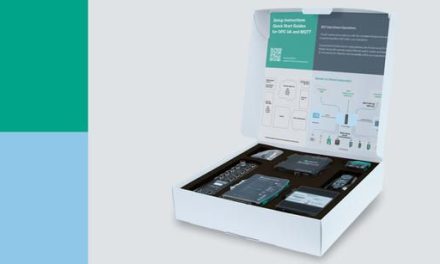In the fast-paced world of electrical engineering, registered designs can provide robust commercial protection at an early stage, particularly when developing a new consumer appliance. However, there are a number of pitfalls to avoid on the way to market.
 Among the main advantages of registered design rights is their ability to protect the appearance of a new product; including any differentiating features, which might help it to stand out in a crowded marketplace. This type of intellectual property (IP) is especially important in the world of consumer electronics, where a new product’s appearance is often part and parcel of its uniqueness.
Among the main advantages of registered design rights is their ability to protect the appearance of a new product; including any differentiating features, which might help it to stand out in a crowded marketplace. This type of intellectual property (IP) is especially important in the world of consumer electronics, where a new product’s appearance is often part and parcel of its uniqueness.
UK Registered Design Rights and European Registered Design Rights are intellectual property rights, which can be obtained by engineers or designers to protect the look of a new product, or an old product with a new appearance. Providing commercial protection for up to 25 years, such rights can apply to, for example, features including the shape, colour and texture of a product, or the material it is made from. It is also possible to obtain protection for surface decoration, graphic symbols, computer icons and graphical user interfaces.
One of the main advantages of registered design rights compared to other intellectual property rights such as patents, for example, is that they are quick to register, normally within 2 to 6 weeks of the application being filed. They are also relatively cheap to obtain. However, they only provide protection for the appearance of a product and will not provide any commercial protection for its functionality. Should the innovation reside solely in the function of a product, then seeking patent protection may be a more suitable approach. Care should also be taken to ensure the design itself is clearly depicted by a number of visual representations, which can be provided in different forms, such as pencil or black line drawings, photographs, or computer-generated graphic images.
While they are relatively quick and easy to obtain, it is important not to rush to file a registration without giving proper consideration to the aspects of the design that the designer is seeking to protect. For example, a photograph of an object may include features that are incidental to the design and do not focus on the important aspects that the designer wishes to protect. A more simple line drawing could help to highlight for example, the shape of the object, without consideration of any surface decoration or ornamentation. In a high-profile Supreme Court case in 2016, the founders of the Trunki suitcase lost an infringement challenge against a UK importer that was allegedly copying their designs because the registered design right lacked the clarity required to adequately protect the product’s individual character.
It is also crucial to get the timing right when filing a registered design right. In the UK and Europe, innovators benefit from a ‘grace period’ of up to 12 months from the date of the first disclosure by the designer within which to file the design registration. This means that there is time to market test prototypes prior to placing them in production. Taking this extra time could also help avoid having to pay for protection that applies to design features that are subsequently removed or significantly altered during the development phase. However, some jurisdictions do not have such provisions, which could make it difficult to obtain design rights in important markets.
Registered design rights should never be considered in isolation. A multi-layered approach to intellectual property protection is sometimes necessary, particularly if a product is innovative both in terms of its appearance and functionality. In these cases, it is possible to pursue patent and registered design rights protection in parallel. Consumer appliances commonly have innovative features in terms of their function and appearance, and so it is necessary to consider the correct forms of protection for a product.
Deciding on the best IP strategy to take will depend on how different the product is thought to be in its chosen marketplace – both in terms of its appearance and the technologies applied. Named in no fewer than 79 patent applications and 52 European registered design rights, the Dyson Supersonic hairdryer has successfully secured multi-layered IP protection for its product in a crowded marketplace.
Before seeking registered design rights protection, design engineers should consider the following:
· Is the product new and does it have individual character? Consider the aspects that make it different from other available products in terms of its appearance and functionality.
· Are there any similar products out there? To provide robust protection, it is important to understand whether your IP rights are likely to be valid, and where potential infringement challenges might exist before bringing a product to market.
· How should the design be represented? It is important to represent your product to best effect when preparing to file a registered design. Up to seven drawings can be filed for each design article. Consider the best format to use and make sure the key features are shown clearly and non-essential features are omitted.
· When is the best time to file a registered design? It is generally best to file at the earliest possible opportunity. However, you may want to bear in mind that if the product is a prototype, then you may want to wait until the design has been finalised.
· Where do you need protection? Innovators should consider the territories where they require intellectual property protection and be aware that regulations can vary. While it is usually straightforward to obtain a registered design in the UK and/or Europe, more complex restrictions can apply in Japan and the US, for example.
David Paton is a patent and design attorney at intellectual property firm, Withers & Rogers, who specialises in advising innovators of consumer appliances.


